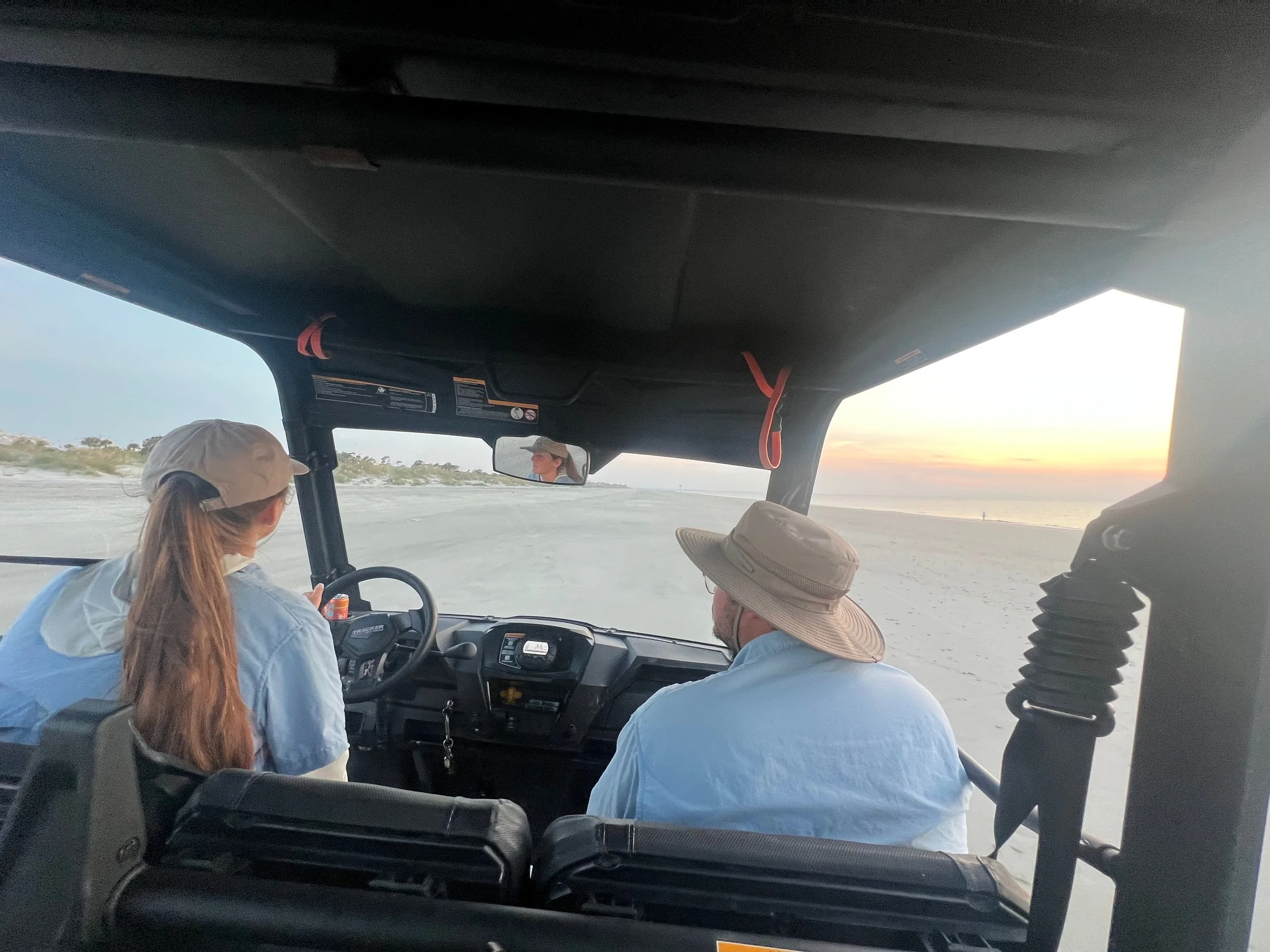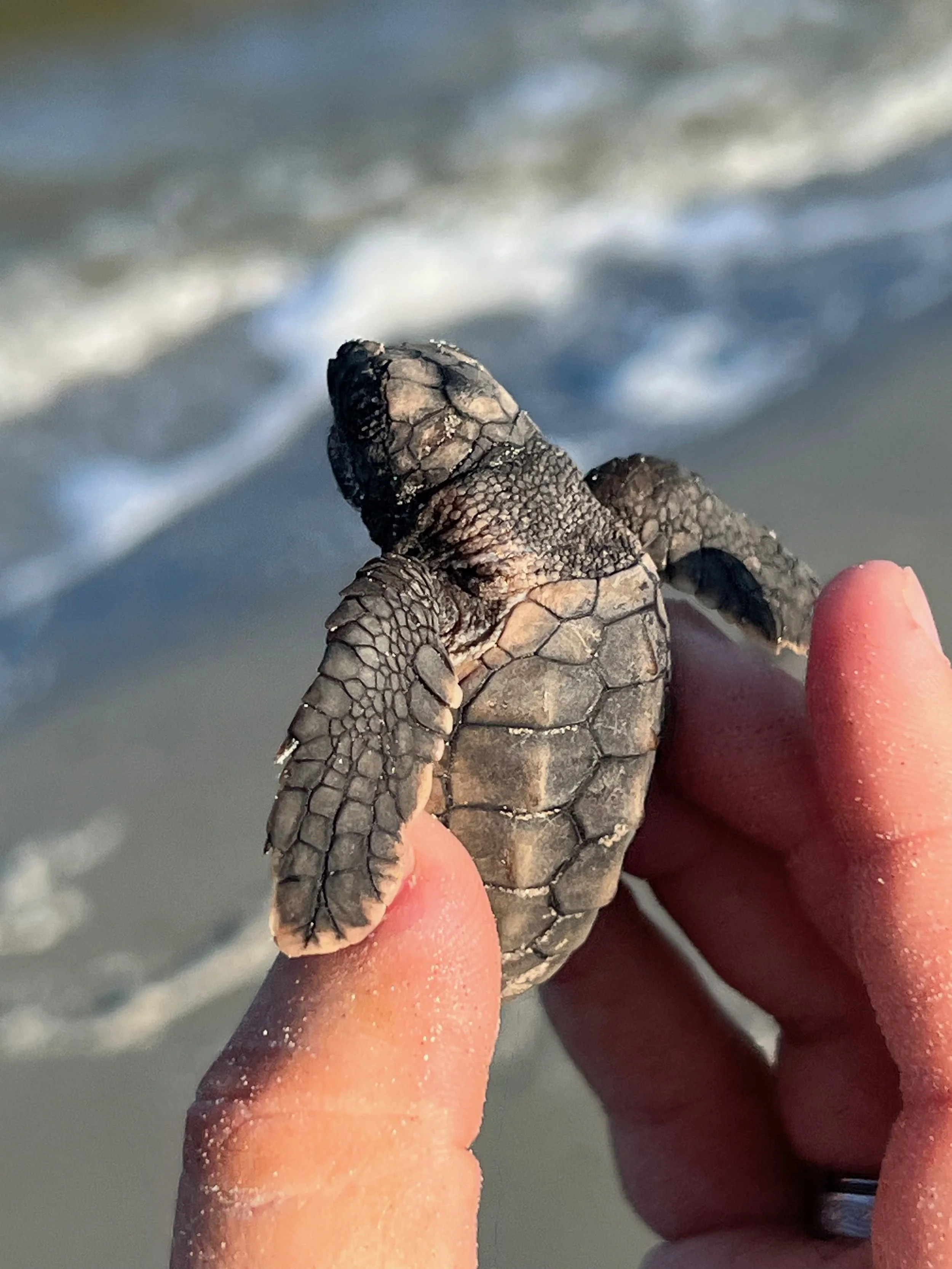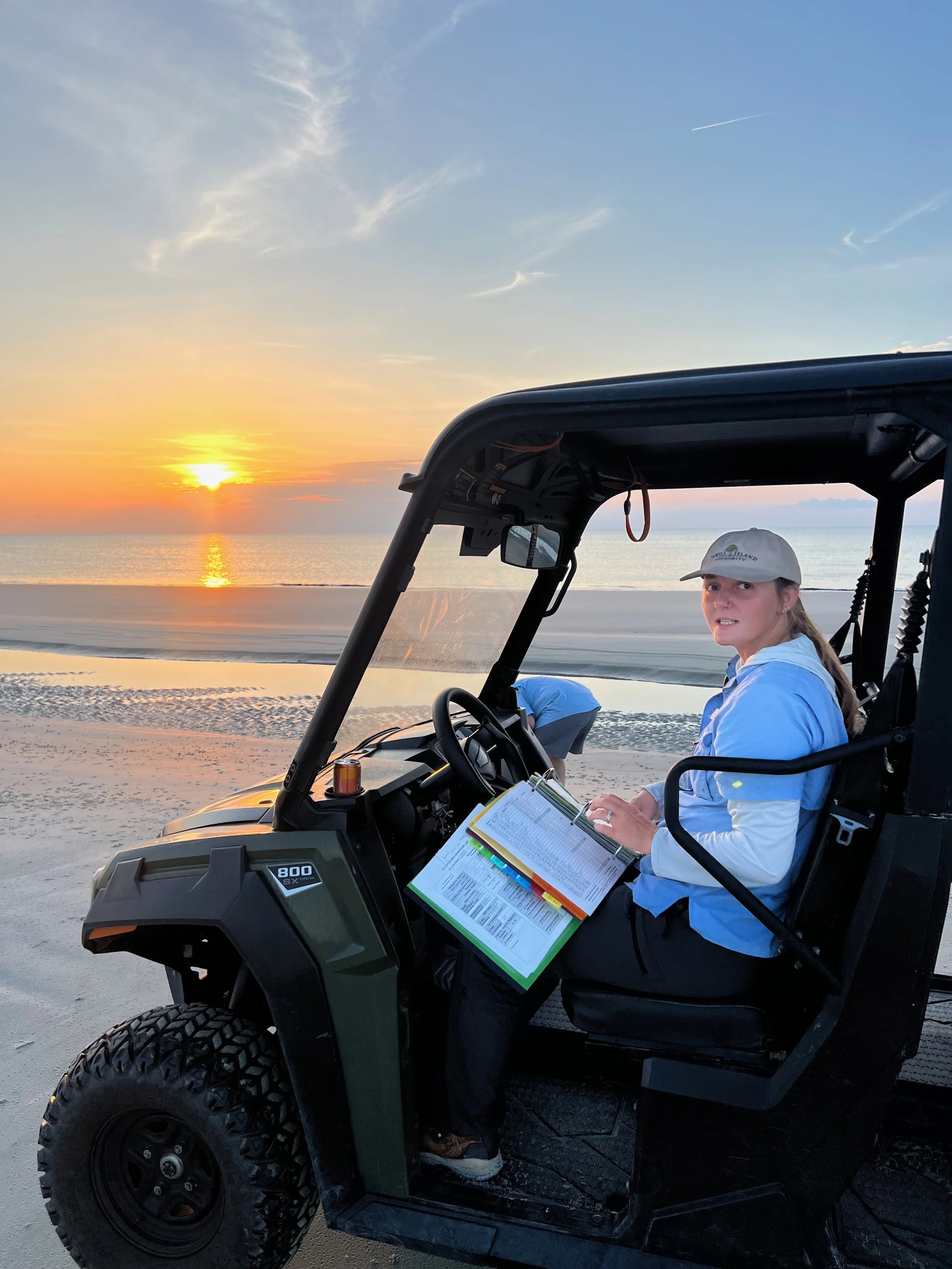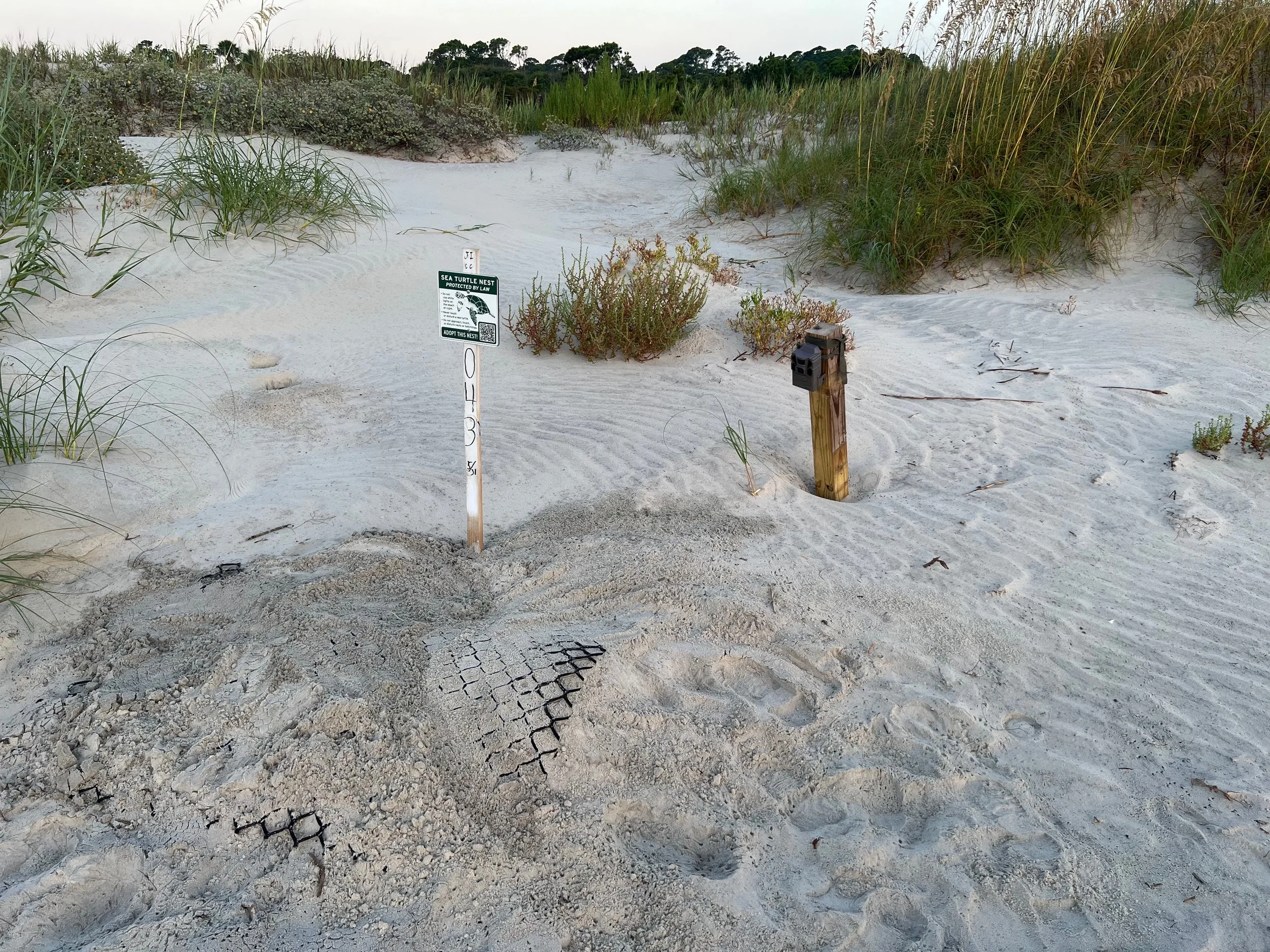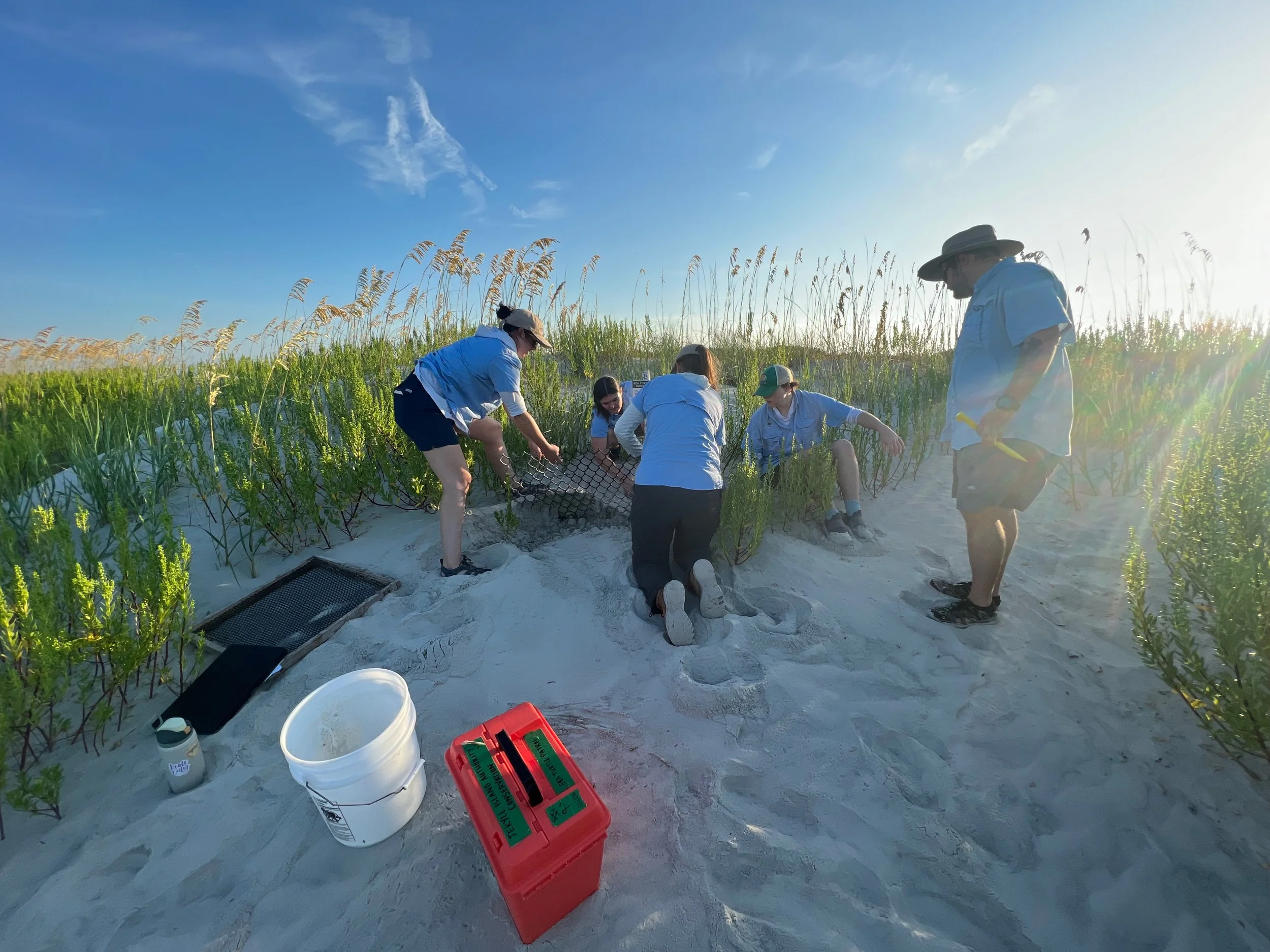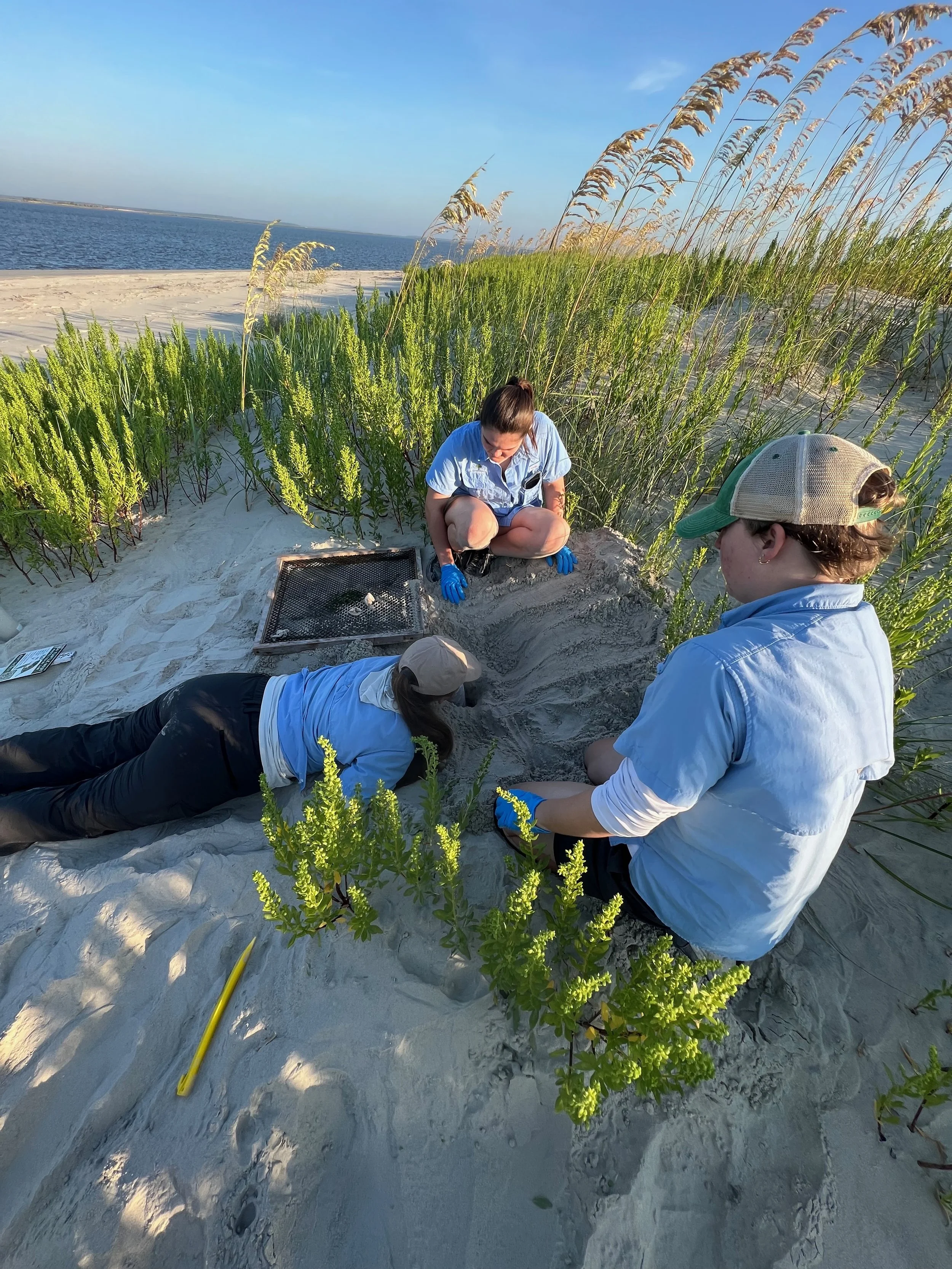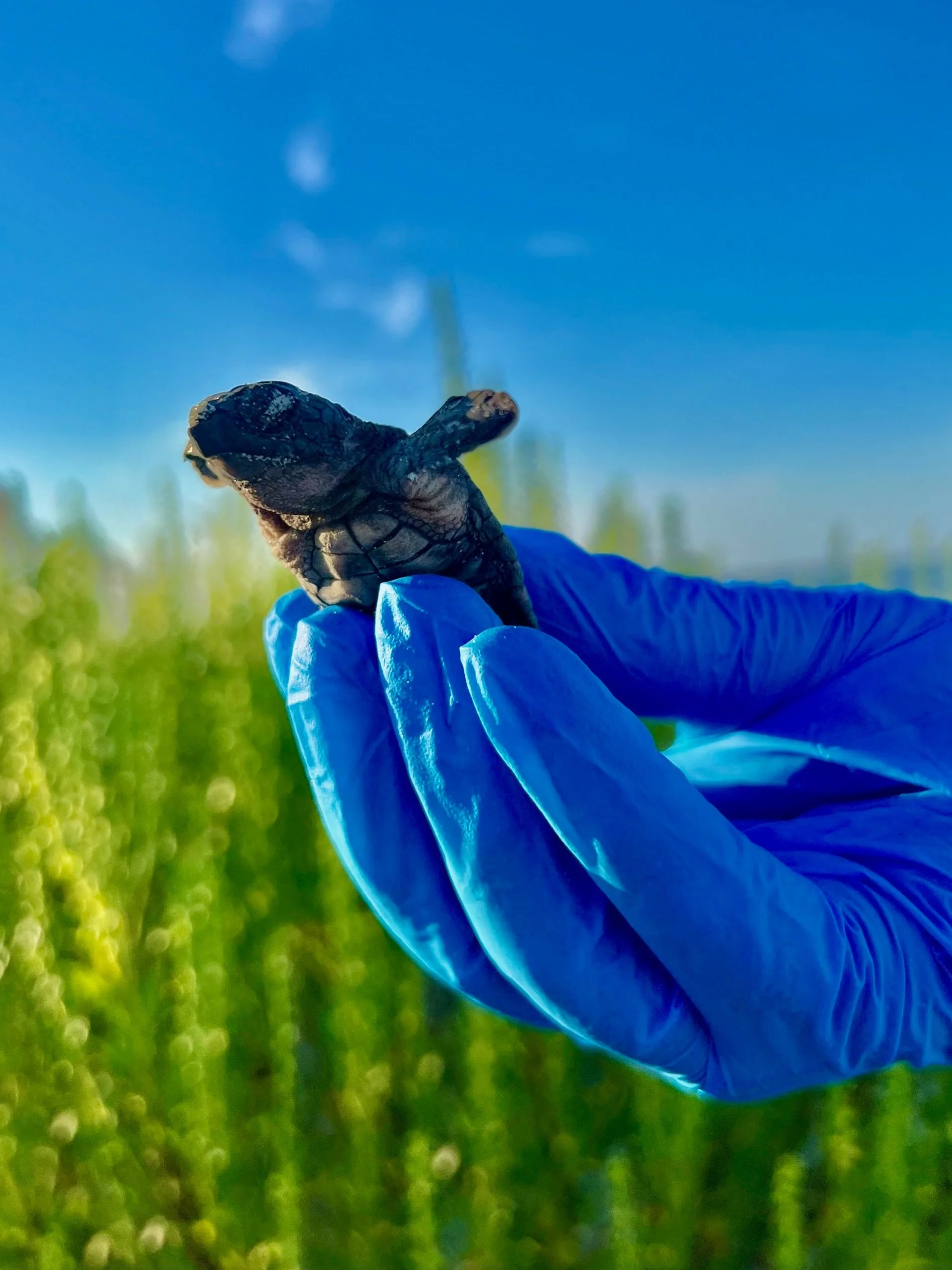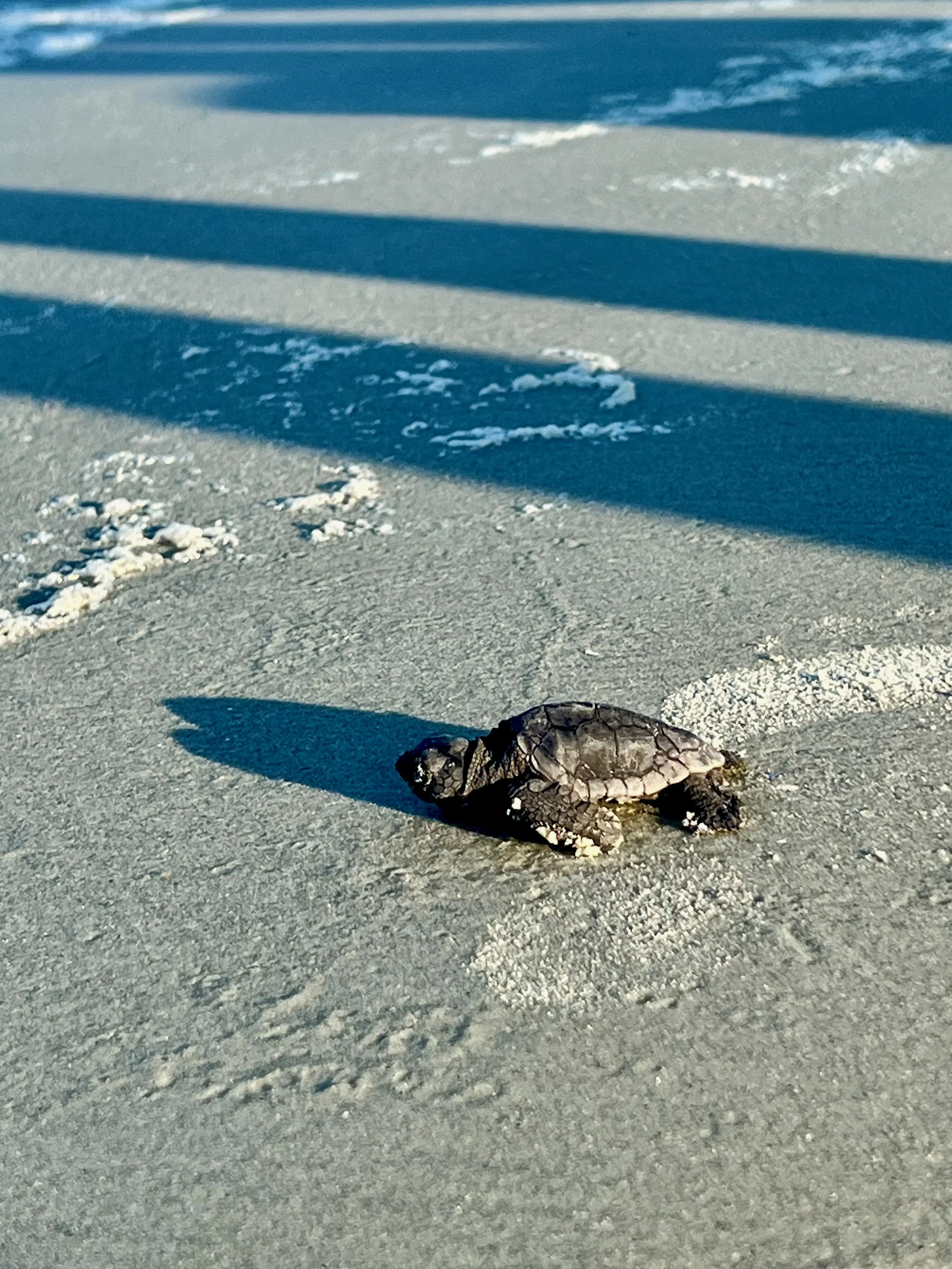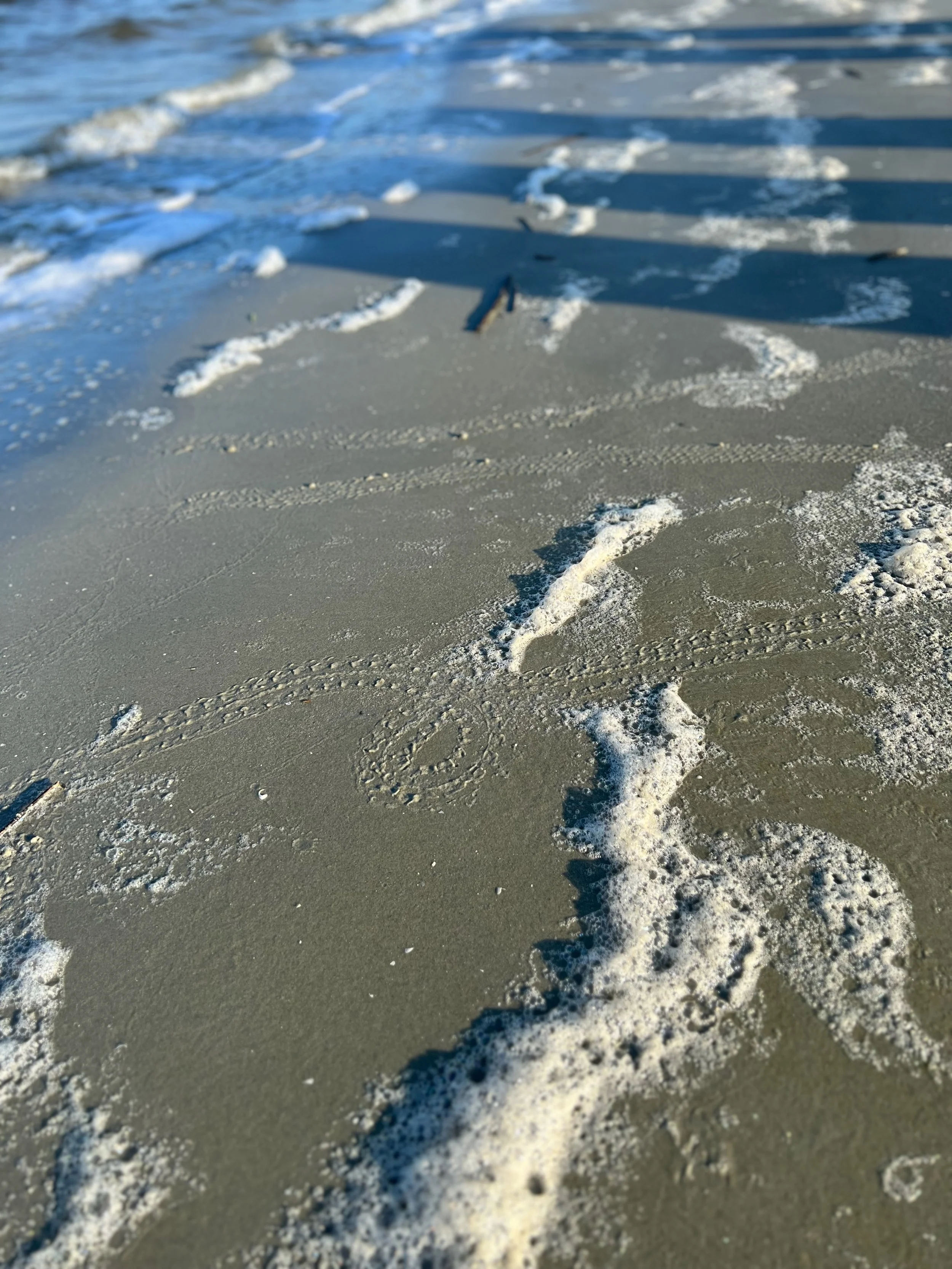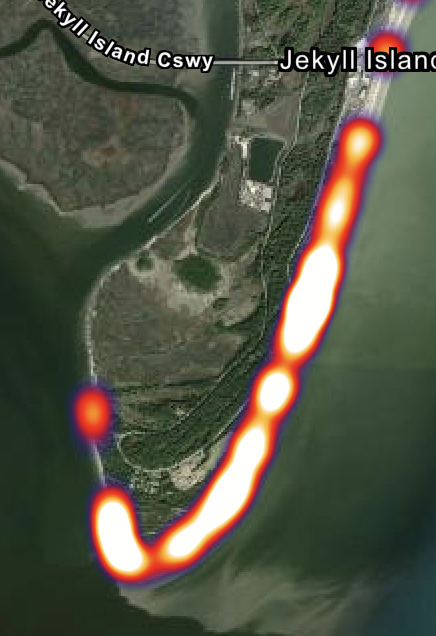
Jekyll Island Sea Turtle Expeditions
Scouting Report: July 31, 2025
“Oh heavenly Father, who has filled the world with beauty: Open our eyes to behold your gracious hand in all your works; that, rejoicing in your whole creation, we may learn to serve you with gladness; for the sake of him through whom all things were made, your son Jesus Christ our Lord. Amen.”
-The Book of Common Prayer: Prayer for Joy in God’s Creation, pg. 814
Scouting Mission
I arrived at Jekyll Island at 6:30 a.m. to ride along with a team of turtle scientists as they did their morning nest inspections.
My goal was to learn all I could about sea turtle ecology in Georgia’s barrier islands, so that we can have the best possible experience for our own sea turtle expeditions next week and in September.
Being able to ride along with actual scientists as they inspected every nest on the island was a true gift.
The Turtles
Most of the nests on Jekyll Island are laid by Loggerhead sea turtles, but occasionally nests will be laid by other species, such as Green, Leatherback, and Kemp’s Ridley sea turtles.
Sea turtles lay hundreds of nests on the shores of Georgia’s barrier islands, and Jekyll Island is particularly noted for the abundance of nests.
2025 has been a good year for nests, and over the course of the morning we would inspect dozens of them, including several that had recently hatched.
Note: this photo is of a baby turtle we are about to release into the ocean. Read on to learn how we found him!
The Scientists
I rode along with Meagan and Will from Jekyll Island State Park. Meagan is a marine ecology student at Georgia Southern (and a native of Wilmington Island!), and Will has been working with sea turtles for almost a decade.
Between them, Meagan and Will were a wealth of knowledge about sea turtle life cycles, and about the nesting habitat on Jekyll Island.
I shared our plans for our own sea turtle expeditions, and they were very helpful in providing suggestions for our trips.
Nest Inspections
The scientists inspect every nest, every morning. They look for signs of predation from raccoons and ghost crabs, or infestations of fire ants.
Driving along the beach, one scientist will get out and walk from nest to nest, communicating what they observe back to the scientist in the vehicle, who records the data.
The nests are laid in the dunes above the high tide mark, and each nest is marked with a sign post. Some even have cameras.
Sometimes the sea turtles laid their nests in areas where there is a lot of human traffic, or where erosion can occur. In those instances, the scientists moved the nests to a safer location.
Hatching
The trigger for the baby turtles to start hatching is a drop in air temperature, and for that reason, hatches often happen at night (please see notes at the end for how this learning is impacting the plans for our own expeditions).
The nests have all been covered with special mats with holes big enough for baby turtles to crawl out, but too small for many predators to get in.
Raccoons and foxes are major predators of turtle eggs, and the mats are key to increasing the success rate of turtle hatchings.
Nest Inventories
When a nest hatches, after waiting for three days (to give straggling hatchlings time to make their way to the water), the scientists do what is called an “inventory” of the nest.
They carefully dig up the nest to count how many eggs hatched, and how many of the baby turtles survived.
When I was with the team we did inventories of three nests, and in each of the them, over 110 eggs had hatched.
Scientists worldwide expect an average of about 60% of eggs in a sea turtle nest to hatch. On Jekyll Island, the average is more than 75%, and on the morning we were out the average was greater than 90%.
That’s a remarkable success rate.
Great Care
The scientists use great care when digging out the nests, as there will sometimes be baby sea turtles left in the nest that weren’t able to make it out.
Here you can see Meagan up to her shoulder in a nest, pulling out hatched eggs and searching for straggling babies.
Most of the stragglers are found in the first 6-12” of sand in the entrance to the nest, so once the entrance has been located, the team wiggles their fingers gently through the sand to feel for little moving flippers.
Precious Stragglers
As soon as they are pulled from the sand, the baby turtles begin flapping their little flippers vigorously, eager to start their journey to the water.
Sea turtles are a protected species, so only the scientists are allowed to handle them.
Their little bodies are perfectly developed, and they look like miniature adult turtles, ready to start traveling the ocean from the moment they are born.
Remarkably Strong
Despite having been trapped in the nest for three days, the stragglers have a remarkable amount of strength.
As soon as the scientists place them by the water’s edge, they immediately start zooming to the water.
They have strong flippers, and even stronger instincts!
Apparently the journey across the sand that the babies make from the nest to the water is important for developing their flipper strength.
For this reason, when the scientists release them they do it 10-20' feet back from the water’s edge.
Little Loopy
Not all of the babies went straight to the water!
One little guy did a couple of loops along the way, and earned the nickname “Donut” from the team.
Key Learnings & Expedition Planning
128 nests in total have been laid on Jekyll Island this year, and 40 have hatched so far (the heat map at left highlights them).
From what the scientists told me, we have a solid chance of seeing turtles hatch during our trips in August and September! Here is their specific feedback:
Location: Our plan to explore St. Andrew Beach was supported by the turtle scientists. This is a beautiful and undeveloped part of Jekyll Island, and most of the hatchings have taken place along this stretch of beach.
Timing: Our original plan was to focus on an early morning expedition, and this is less likely to be successful than an evening mission. This is due to the hatchlings being most often triggered to emerge by cool evening air. For this reason, we will begin our expeditions with a Friday night exploration!
Based on these insights, final itineraries will go out this week for next week’s trip. Next Friday will also be a full moon!
Wildlife Abounds on Jekyll Island
While we were surveying the nests, a tourist waved us down and showed us a photo of a bobcat that she had seen just minutes before.
There are dozens of adult bobcats living on Jekyll Island, which wasn’t actually that much of a surprise after seeing just how much wild space remains on the island.
Many thanks to Meagan, Will, Corey, Sammy, and Bailey for sharing so much information! I am more excited than ever for our own expeditions.
God’s peace,
John

